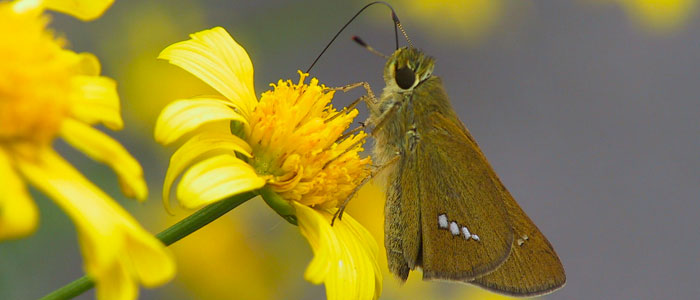

Helen I Battle Professor
Department of Biology
Western University
1151 Richmond St. N
London, Ontario, Canada
N6A 5B7
Office: Biological & Geological Sciences 3066
Email: jmcneil2@uwo.ca
Phone: 519 661-3487
Fax: 519 661-3935

Migration:
I have worked for many years on the true armyworm, Pseudaletia unipuncta, In North America this is a migrant species that responds to abiotic cues (temperature and day-length) associated with predictable seasonal habitat deterioration. More recently we have initiated comparative studies using the migrant North American populations and non-migrant ones from the Azores, a volcanic archipelago in the Atlantic Ocean that is about 1,300 km west of Portugal. We are exploiting the differences between these populations to examine a number of questions relating to flight capacity, the impact of atmospheric pressure on flight performance and the role of multiple mating and sperm precedence on migratory behaviour. We will also be examining the expression of AT and AST genes, under different ecological conditions. These genes control the production of the allatotropin and allatostatin, neuropeptides implicated in many aspects of reproduction and migration. We are also looking to see if the for gene is implicated in migration. In addition we are comparing the morphology and physiology of moths reared under an array of different field conditions to determine if this species has evolved traits that would reduce the cost of long distance migration on future reproduction. A parallel study is being carried out in collaboration with Professor K-M. Wu on migratory insects, such as M. separata and H. armigera in China
I also have a study on the monarch butterfly, addressing the question “How do they know when to stop on the southward fall migration to Mexico?”. This is an interdisciplinary study being carried out in collaboration with Professors Barrie Frost (Queens), Lincoln Brower (Sweetbriar College), Wittko Francke (Hamburg University), Jocelyn Millar (U of California, Riverside) and Stefan Schulz (Braunschweig University). Within the context of this project we will also be revisiting the reproductive physiology of the species with respect to the northward spring migration.
Pheromone mediated mating in aphids and moths:
Despite the world importance of aphids as pests, the chemical ecology of aphid reproduction is a relatively new research field. There are very few studies examining the calling behaviour (pheromone emission) of females or the receptivity of males to these odours. Furthermore, the handful of papers examining the role of host plant volatiles in aphid reproduction have report quite divergent results. Thus, a great deal of behavioural and ecological research is required to obtain a broader data base to search for general patterns, not only for an understanding of pheromone mediated mate location in weak flying insects but also to determine the feasibility of using aphid pheromones in management programmes. Based on little experimental evidence, it has generally been assumed that mate location in aphids is similar to the upwind flight to a pheromone source reported in strong flying insects. However, our recent work on the potato aphid raise questions concerning the validity of these assumptions. We have just completed a series of experiments investigating the effects of abiotic factors (temperature, humidity, wind speed) and host plant volatiles on the pheromone-mediated reproductive biology of the diecious (host alternating) potato aphid, M. euphorbiae.
The Western bean cutworm has significantly increased its geographic range in the last decade and now has the potential to be a serious pest of corn and beans in the Great Lakes region. While pheromone trap are useful for monitoring presence/absence they are less useful for predicting damage levels. We have been carrying out studies to examine calling (the behaviour associated with the release of sex pheromone) of females, as well as the response of males, under a range of different ecological conditions.
We are also expanding our research examining the behavioural responses of insects in response to short term changes in atmospheric pressure. We wish to determine the general applicability of the finding we recently reported on the pheromone mediated mating on three insect species from different Orders (Pelligrino et al., 2013)
The question of resistance management is an integral part of integrated pest management programmes against insects that threaten primary productivity and heath. I am currently setting up a research project with colleagues in Brazil to examine the effect of Bt resistance on the pheromone mediated reproductive biology of moths. This research is being planned within the context of resistance management when GM crops are used.
Identification of infochemicals:
We are currently working on the identification of
(i) the male sex pheromone of the European skipper, as this plays a major role in female mate choice.,
(ii) the female sex pheromones of the aphid parasitoids, Aphidius nigripes and A. ervi
(iii) the volatiles from burned vegetation that attract and stimulate sexual maturation in black army cutworm virgin females
(iv) the sex pheromones of two geographic races of the cockroach, Diploptera punctata.